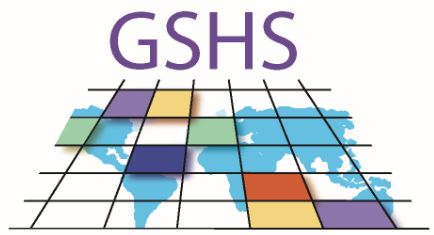Global School-Based Student Health Survey 2003
Kenya, 2003
Get MicrodataIdentification
KEN_2003_GSHS_v01
Global School-Based Student Health Survey 2003
| Name | Country code |
|---|---|
| Kenya | KEN |
Global School-Based Student Health Survey
This is the first GSHS conducted by Kenya.
The GSHS is a school-based survey which uses a self-administered questionnaire to obtain data on young people's health behaviour and protective factors related to the leading causes of morbidity and mortality among children and adults worldwide.
Sample survey data [ssd]
Individuals
Version
Public-use dataset
2018-06-20
Scope
The following core modules were included in the survey:
alcohol use
dietary behaviours
drug use
hygiene
mental health
physical activity
protective factors
sexual behaviours
tobacco use
violence and unintentional injury
| Topic | Vocabulary |
|---|---|
| Global School-based Student Health Survey (GSHS) | Survey |
Coverage
National coverage plus subnational coverage for Central Region, Coast Region, Lake Region, and Pastoral Region.
School-going adolescents aged 13-15
Producers and sponsors
| Name |
|---|
| Ministry of Health |
| Name |
|---|
| World Health Organization |
| US Centers for Disease Control and Prevention |
Sampling
The 2003 Kenya GSHS was a school-based survey of students in classes 7 and 8 and forms 1 and 2. A two-stage cluster sample design was used to produce data representative of all students in classes 7 and 8 and forms 1 and 2 in Kenya. At the first stage, schools were elected with probability proportional to enrollment size. At the second stage, classes were randomly selected and all students in selected classes were eligible to participate.
National: The school response rate was 96%, the student response rate was 87%, and the overall response rate was 84%.
Central Region: The school response rate was 100%, the student response rate was 93%, and the overall response rate was 93%
Coast Region: The school response rate was 100%, the student response rate was 95%, and the overall response rate was 95%.
Lake Region: The school response rate was 88%, the student response rate was 72%, and the overall response rate was 64%.
Pastoral Region: The school response rate was 100%, the student response rate was 91%, and the overall response rate was 91%.
The weighting formula used is:
W=W1 W2 f1 f2 f3.
The list below shows what each variable in the formula represents.
W1 - The inverse of the probability of selecting each school
W2 - The inverse of the probability of selecting each classroom
f1 - A school-level non response adjustment factor
f2 - A student-level non response adjustment factor calculated by classroom
f3 - A post stratification adjustment factor calculated by sex within grade
Survey instrument
The following core modules were included in the survey:
alcohol use
dietary behaviours
drug use
hygiene
mental health
physical activity
protective factors
sexual behaviours
tobacco use
violence and unintentional injury
Data collection
| Start |
|---|
| 2003-09 |
Data processing
All data processing (scanning, cleaning, editing, and weighting) was conducted at the US Centers for Disease Control.
Data Access
The user undertakes:
(1) to acknowledge the data source.
(2) to share any planned publications with WHO prior to publication.
(3) to offer co-authorship of any reports or publications using the survey results to the coordinator of the survey.
(4) to use the data for non-commercial, not-for-profit public health purposes only.
Publications based on GSHS data should use the following acknowledgement:
"This paper uses data from the Global School-Based Student Health Survey (GSHS). GSHS is supported by the World Health Organization and the US Centers for Disease Control and Prevention."
Disclaimer and copyrights
The data is being distributed without warranty of any kind. The responsibility for the use of the data lies with the user. In no event shall the World Health Organization be liable for damages arising from its use.
Contacts
| Name | Affiliation | URL | |
|---|---|---|---|
| NCD Surveillance Team | World Health Organization | ncdmonitoring@who.int | http://www.who.int/ncds/surveillance/gshs/en/ |
Metadata production
DDI_KEN_2003_GSHS_v01_M
| Name | Affiliation | Role |
|---|---|---|
| Yili Zhao | World Health Organization | Documentation of data |
| Melanie Cowan | World Health Organization | Supervision and review of metadata and documentation of study |
2018-06-20
Metadata version
Version 1.0 (June 2018).
